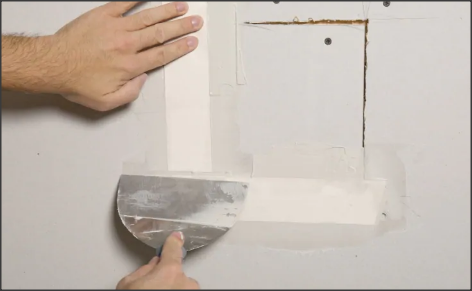Drywall repair can seem daunting if you don’t know what you’re doing. While a professional contractor would be better at doing major installations or installing new walls, many say it can still be a DIY project, at least with some basic guidance. So strap on your work belt, grab the right beverage, and read these tips to learn drywall repair techniques so that you too can fix drywall yourself. For starters, let’s look at the problem.
Drywall repair starts with finding the problem area. Since drywall is mostly seen in ceilings and walls, it’s usually easy to see where the problems might lie. But checking other walls (or even ceilings) may also prove fruitful in your quest for out-of-the-way areas to fill in. Start by measuring the wall or ceiling.
Choosing the right materials is crucial to drywall repairs. There are two basic kinds: regular drywall and moisture-resistant drywall. If you are doing a repair in a humid, damp, or moist area, such as a bathroom or basement, it’s best to use moisture-resistant gypsum board. While installing gypsum board, make sure that you anchor it securely to the wall. Using an insufficient amount of nails or screws can result in minor cracks, so use screws or nails that are rated for drywall installation and use plenty of them to ensure your board is securely fastened. If you have doubts about your abilities to install tape and joint compound, hire a pro to avoid a home catastrophe.
Saving money on professional drywall repair cost doesn’t mean sacrificing quality. Sometimes fixing a dent or small hole isn’t all that difficult. But when you’re tackling massive holes, it’s best to call in pros. Professional drywall contractors know how to tackle large-scale projects like this, and they also have the tools and skills needed to make your ceiling look as good as new. Even if you fix just one or two small cracks, it will add years to the life of your ceiling. And that’s not something that you should overlook at all, seeing as ceilings are usually the first thing to fall apart after any disaster or accident.
If you have dents or cracks in your drywall, there are a couple of ways to repair drywall quickly and inexpensively. One of the easiest fixes involves removing the damaged part of the drywall and sanding it down until you get to the bottom. This allows you to smooth out the damaged area, then apply new drywall at the top. You may also want to consider adding fiberglass filler to the bottom part of the hole to make it look as smooth as possible. This not only makes it easier to match the new patch to your ceiling, but it prevents further damage to your drywall.
It’s important to understand that the simplest solutions involve patching up the visible areas and covering up the less noticeable cracks. If your wall is completely split in a corner, for example, you might choose to add caulking to keep the broken pieces from making their way into the rest of the drywall. The same goes if you have a large crack that goes from wall to wall, but don’t see a way to fill it. In this case, the simplest way to repair the crack is to fill it with drywall compound. However, you’ll also want to consider replacing the damaged part with a similar material to avoid a recurrence in the future.
